By Smita Mukerji
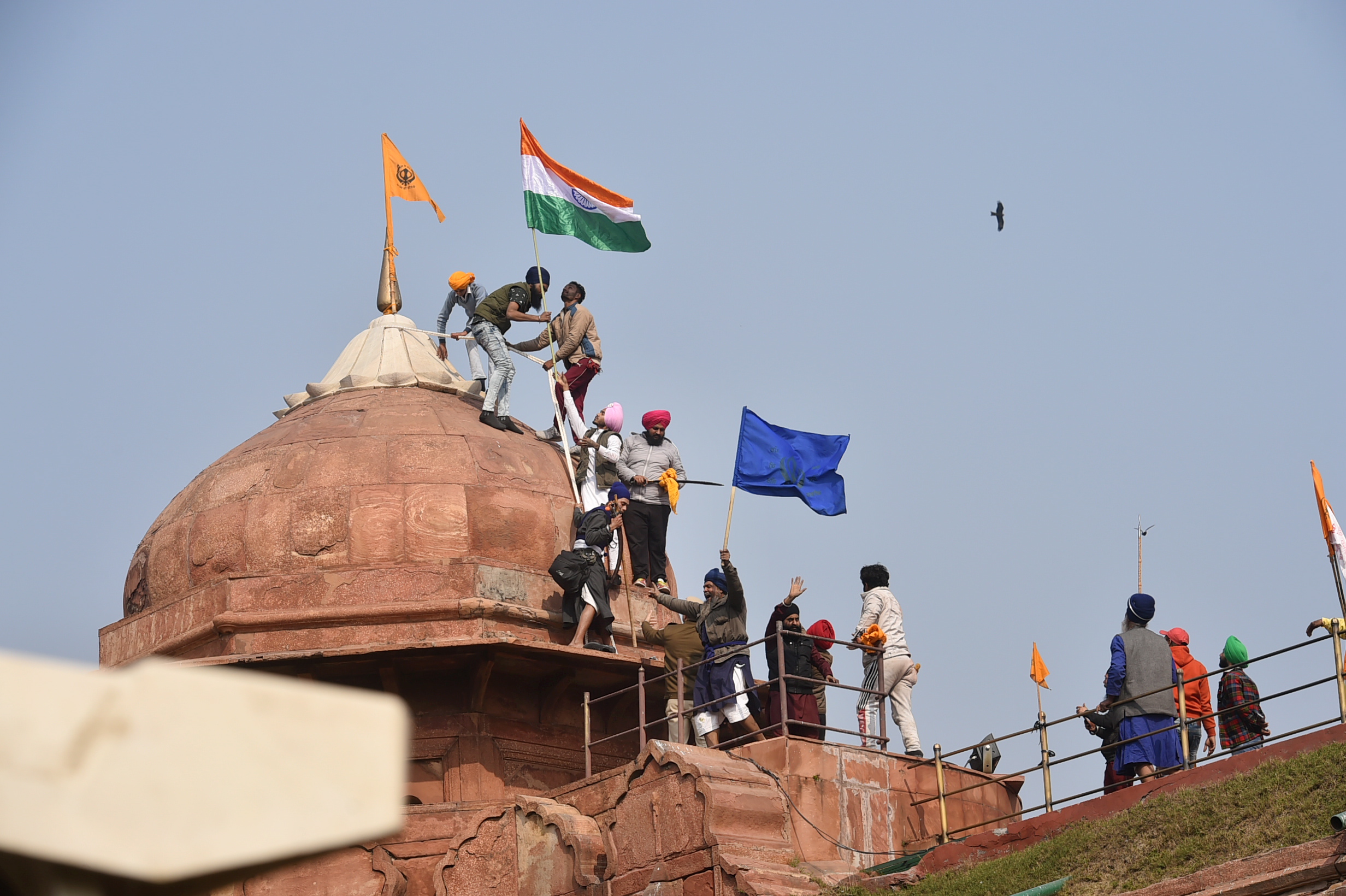
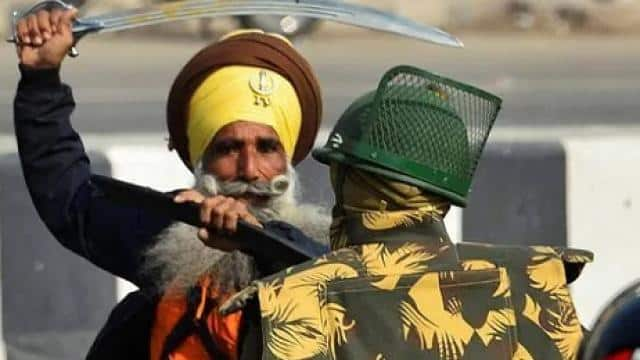

26 January 2021 turned out to be an ignominious chapter in the history of modern India. Hundreds of supporters of Khalistan, an outlawed terrorist organisation that aims at carving a separate Sikh state out of India, climbed the ramparts of the Red Fort in Delhi, a monument of national significance, and hoisted their religious flags including Khalistani flags, at several spots throwing off the national flag of India. Citizens watched horrified the scenes of thousands-strong rampaging Sikhs and lumpens led by political goons charging into the capital city, mowing through police barricades in speeding tractors, attacking police personnel, bared swords in hand, many on horseback, and damaging public property, wreaking havoc on a day of a solemn national observance.
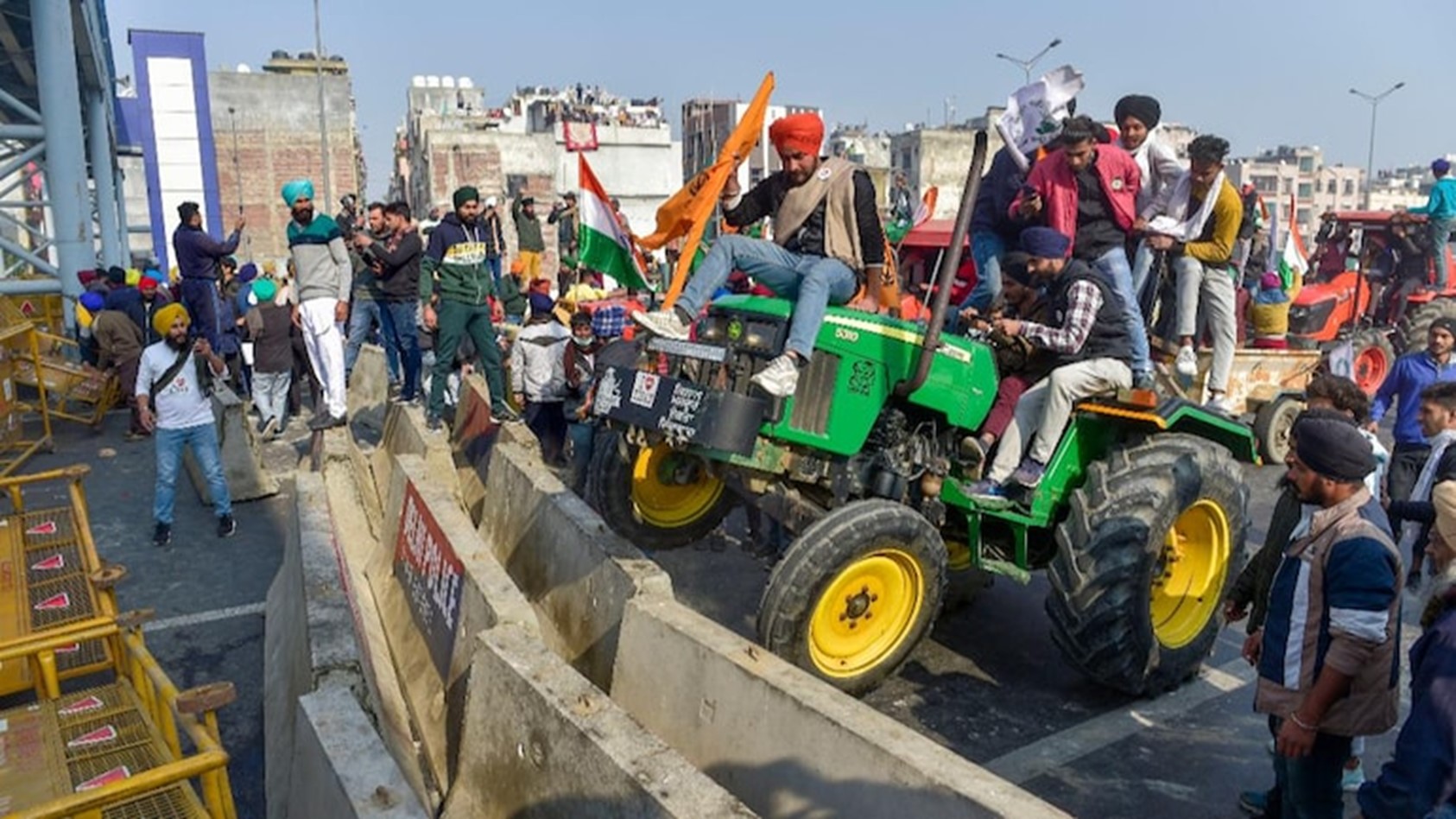
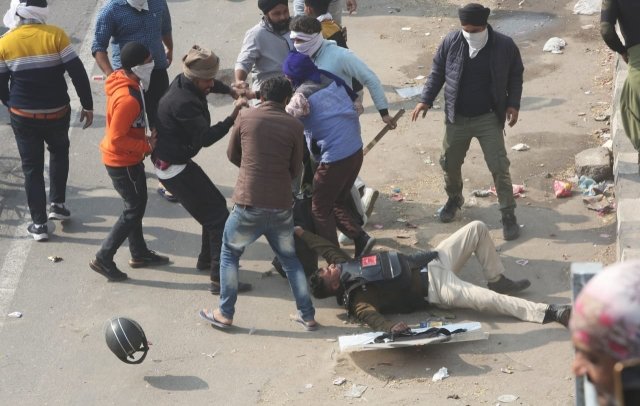
In spite of intelligence inputs about Khalistani involvement in the massive mobilisation besieging Delhi over almost three months, which was carried on in the garb of a “farmers’ protest” against the recently passed farm bills, and led to the present mayhem, they had earlier been granted the permission by a perpetually diffident and witless BJP administration for taking out a ‘tractor rally’ in the city on Republic Day. Close to 400 policemen are reported to have been injured in the resulting violence, the law-enforcement virtually thrown before bloodthirsty mobs with their arms tied, failing orders from the government to deal with dangerously armed mobs with proportionate force. No other government in the world would hold this dubious distinction of rendering their own security forces toothless before attacks on the state they are defending. A robust state values and fiercely protects the physical integrity of every single officer of law! The utter foolhardiness of this gesture exposing the capital city to attack by hostile forces, and the unscrupulousness of sacrificing security forces as cannon fodder for its image, the endless bungles of a desultory government under the ruling Bharatiya Janata Party (BJP) will—hopefully—remain in discussion among the discerning public after the outrage dies down, and a subject for assessment in history. History did not remain unscathed either as it was soon discovered that the invading mob vandalising the Red Fort had damaged irreplaceable artefacts, making off with some of them.
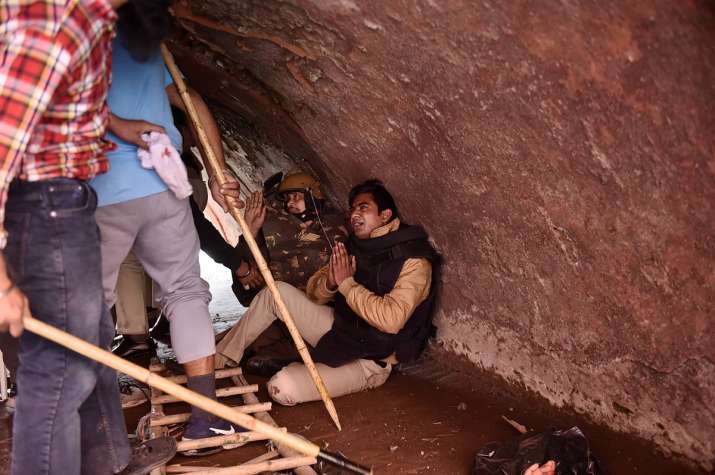
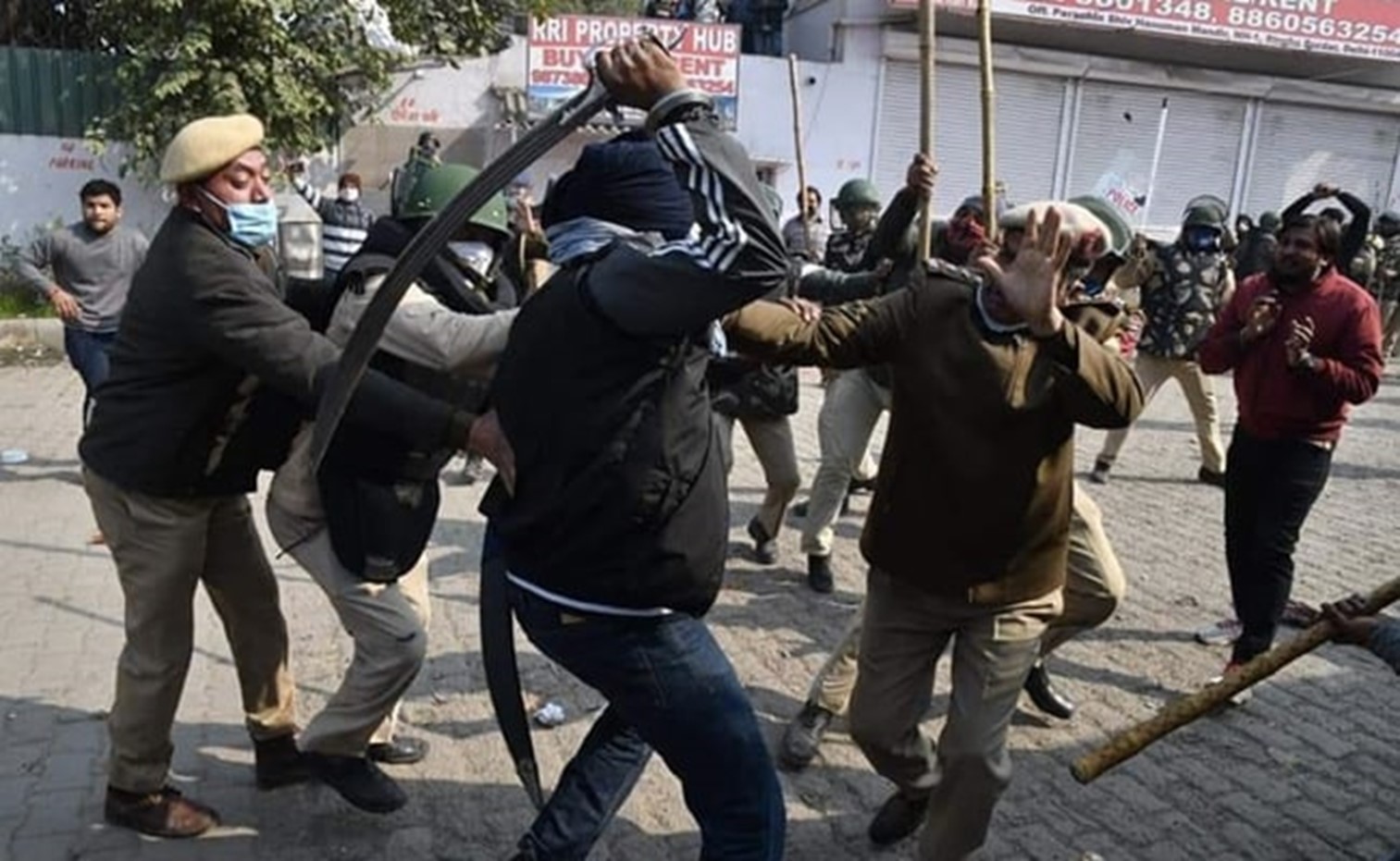
There also has to be a serious re-thinking on the law allowing carrying of arms as religious symbols. Religion cannot become the excuse for endangering the life and limb of other citizens, nor lenience from law leaving this to the conscience of the bearers of the weapons. This kind of shameful surrender of the law enforcement before lawless elements spells doom for the state. No religious identity can be treated as above law. The Sikhs have been allowed to get away for too long under the pretext of being ‘saintly soldiers who protected dharma and Hindus’ (an elaborately constructed perception beginning with eighteenth century Sikh literature meant for building a following among the rural Punjab populace, one however that has little basis in historical evidence.) There have been at least two incidents in recent past where Sikh miscreants used traditional weapons to critically injure police personnel and innocent bystanders. For now, these disturbing visuals remain with us as grim reminder that a weak Indian government allowed a takeover of its capital city imperilling the lives of its citizens and the security of its establishments.
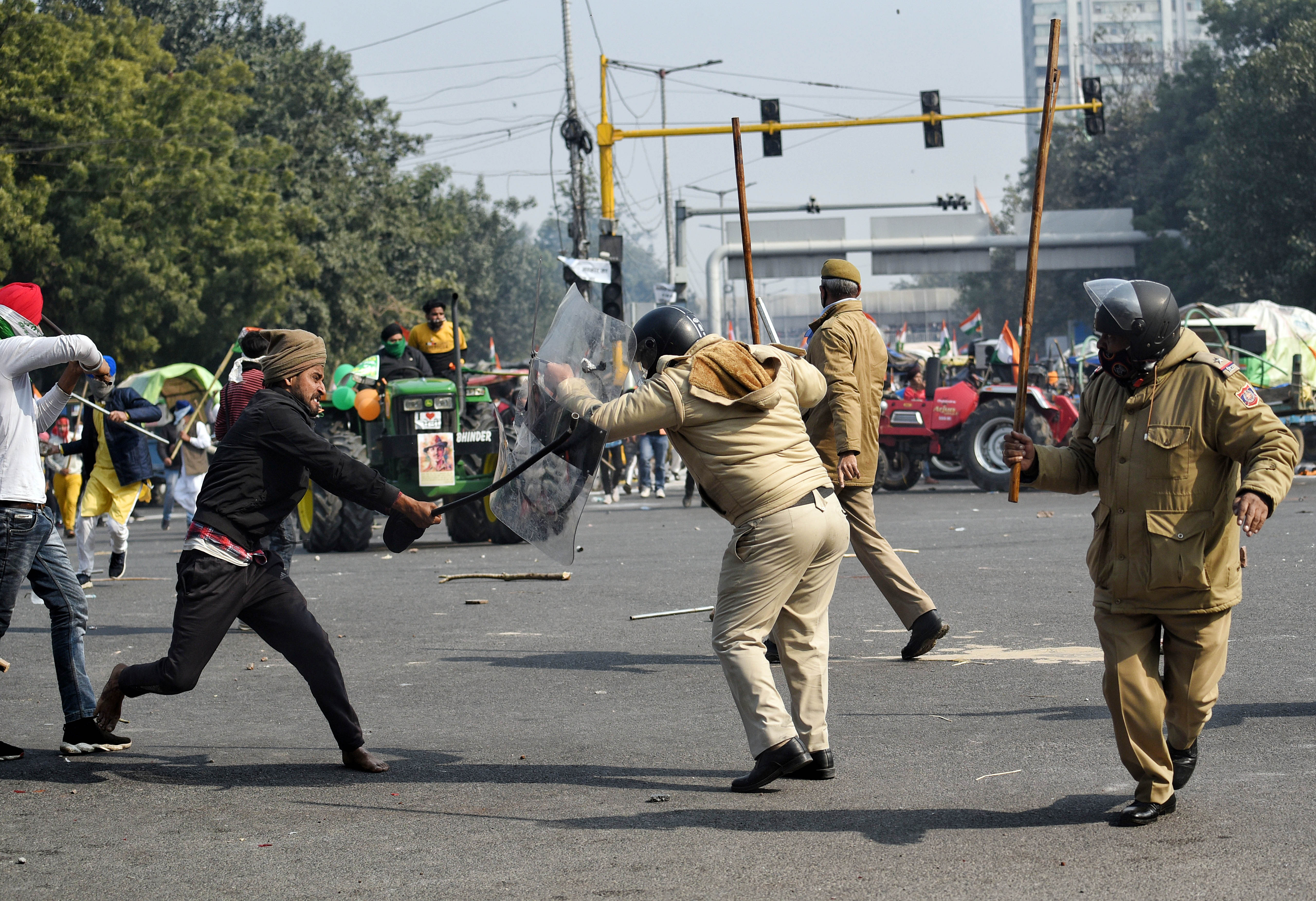
But sooner than later, sympathy for the insurrectionists started pouring from not unexpected quarters, as ‘damage control’ pieces attempting to dignify the Republic Day attack as some kind of an idealistic triumph of a 21st century version of the merry men. A Print article and another one by Wire claim in almost identical words (same lobby??), “…the Sikh army led by Baghel Singh, Jassa Singh Ahluwalia and Jassa Singh Ramgarhia, conquered Delhi in the year 1783. They defeated the Mughals, sat on the emperor’s throne and raised the Nishan Sahib on the Red Fort.” Interestingly, this account also appears in a pop-history piece of a BJP aligned news website and is repeated in bombastic gloats of dozens of Sikh websites, and has made its way in Wikipedia as the page ‘Battle of Delhi 1783’: “They entered the Red Fort hoisted the Sikh flag [Nishan Sahib] and occupied Diwan-i-Am,” as the claim goes.
But is this historically accurate?
There is no mention in any historical source which speaks of the Nishan Sahib being hoisted following the ‘victory’. There is no reference at all to any battle or victory, nor the hoisting of any flag, neither on Red Fort nor anywhere else on that occasion. In fact, apart from handed down word, there is no historical evidence of a Nishan Sahib having existed in any definite form until that time, and likely several loose symbols and flags adopted at various times by the Sikh gurus and individual misls.
The contemporary reputation of Sikhs was rather that of predatory bands who, having gained militarily after the disintegration of Mughal power, routinely raided territories outside Punjab to demand tribute (rākhi), in the course of which oppression of the citizenry was the normal mode of exaction.[1]
The said “battle” of 1783 was in the nature of a pillaging expedition by petty Sikh chieftains to the north-central regions. On their way back, they thought of looting the townships in the outskirts of Delhi which began with raids on Aligarh and Bulandshahr. They began by killing common people in Malikagunj, Subzi Mandi and Mughalpura, setting the towns afire. According to the Delhi Chronicle (‘Waqā-i Shah Alam Sani’), “The inhabitants of the town were so much alarmed that they took shelter inside the fort.” After hasty conscription from among citizens to add numbers to the forces of a demilitarised Delhi government (after the Allahabad Treaty of 1765) a contingent was sent to meet the Sikhs and forces summoned from neighbouring areas. Negotiations were opened simultaneously and the menace averted after a settlement between the Delhi court and the marauding Sikhs paying off three lakh rupees to the latter. Thereafter, the larger body of Sikhs left, whilst a smaller party of about 4,000 men under Baghel Singh stayed back, as per traditional sources, to build gurudwaras. But the fact is that the Sikhs never entered the town, leave alone the Red Fort. They had been camping at the banks of the Yamuna at Barari Ghat,[2] and after having wrung out the ransom they occupied the octroi post and the kotwali, while being stationed in Subzi Mandi.
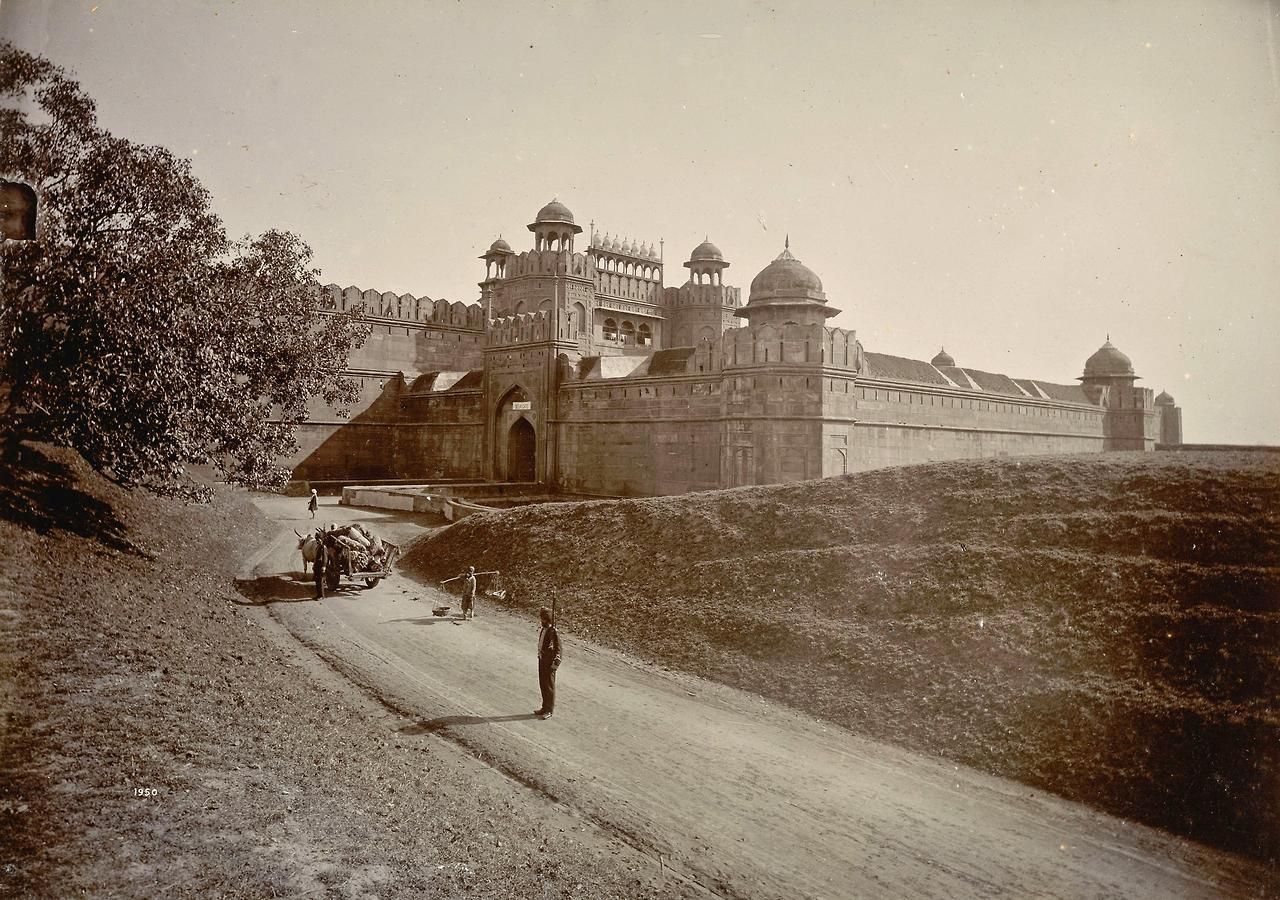
According to the account in ‘Raj Khalsa’ (by Giani Gyan Singh), their activities during this period consisted of building gurudwaras, one in Teliwara (in memory of Mata Sundari and Sahibdei, the wives of Guru Gobind Singh), another being ‘Bangla Sahib’ on the spot where Guru Harkishan had breathed his last, ‘Rakab Ganj’ where Guru Tegh Bahadur’s dead body was cremated, and ‘Sis Ganj’ at the spot where he had been beheaded. Four tombs were also built at the spots where Mata Sundari and Sahibdei, Guru Harkishan and Ajit Singh (adoptive son of Mata Sundari) were cremated.
The Sikhs at this time also opened communication with the British for establishing diplomatic relations, to which the British made approving noises, however expressed their misgivings—in a letter dated 27 April 1783 from James Browne, British East India Company’s (EIC) agent and a minister at the Delhi court—stating that this was possible only “on the condition that of obedience to Shah Alam II and laying aside the practice of plundering the Gangetic Doab and the crown-lands.”
The preceding settlement with the Delhi court and the EIC clause forecloses the possibility of any Sikh standard having been hoisted on Red Fort. It had not been occupied by the Sikhs on any occasion, neither during the expedition in question nor any other.
A description of the Sikhs’ supposed occupation of the Red Fort is found only in ‘Panth Parkash’[3] of Giani Gyan Singh, a highly coloured account written about a hundred years ex post facto and is historically unreliable.[4]
It is clear that the Red Fort was continuously occupied by the Mughal scion[5] which was under the protection of the Marathas and the British alternately. With Mahadji Shinde acting as ‘absolute minister’ (vakil-i Mutlaq) to the throne since 1771 and an EIC envoy at the Delhi court as official resident in the city since 1782, the Sikhs could at no point have got control of it. The only other flag, apart from the Mughal, British and that of the Republic of India, which has flown on the Red Fort, was that of Mahadji Shinde, from 1788 onwards till the end of Maratha power in 1803. Sikh chauvinists could justifiably feel pride this time, since 26 January 2021 is actually the first time that Nishan Sahib was hoisted at a dominant position on red fort, through vandalism it may well be, and no military “victory”.
The Sikhs’ interests with the British at the time of this foray to the margins of Delhi was being sued by their vakil Lala Lakhpat Rai who repeatedly represented on their behalf, but the Sikhs plundering habits was cited as a hinderance thereto reiterated in successive letters from Browne. In a reply to another letter from Rai remonstrating at the characterisation of Sikhs as hordes of freebooters, Browne wrote on 5 August 1783:
“By reason of disobedience and rebellion to his majesty and oppression and ill usage of God’s people, they are universally accounted ill-advised, otherwise the fidelity of these noble chiefs to their engagements and their firmness to treaties would be clearer than the sun.”
In his reply to Lahna Singh, one of the Lahore chiefs, he reiterated:
“Several of your sardars have contracted the bad habit of plunder and devastation, and boasted of their opposition and rebellion to his majesty and the nobles of the Presence.”
In another reply to one Meherban [Baghel] he wrote:
“Many chiefs of that place had adopted intentions of war and plunder and violence and oppression to the people, and besides had opposition and enmity to his majesty and the noble omrahs.”
Acknowledging the letter of Sahib Singh of Patiala he wrote:
“These chiefs have made the system and custom of plunder and rapine their distinguishing symbol, and entertain opposition and enmity to his majesty to such a degree that the sublime palace from want of vigilance did not remain protected from the attacks of this nation.”
This is far off from the claim in the above articles that there was “a victory procession through the streets of Delhi which was joined by Hindus, Muslims and Sikhs as they welcomed the Sikh forces for liberating them from Mughal tyranny.” It is such spurious braggartry on which the ‘Sikhs saved the Hindus’ propaganda is based.
In May–June 1783, during a famine that gripped entire northern India, the Sikhs ravaged the Yamuna Doab region with their incessant raids. They descended on Saharanpur and Muzaffarnagar and proceeded to plunder two villages near Jalalabad, where they were resisted by the inhabitants and Nahar Singh Gujar.[6] They laid waste several villages near Kairana, Baghpat, Farrukhnagar and again approached Barari. Fleeing villagers from adjacent areas began crowding in Delhi yet again seeking refuge in its walled precincts. The depredations of roving Sikh bands at the height of this ongoing humanitarian tragedy would continue for months (and several years thereafter) until an expedition under Maratha general Bapu Malhar in 1785 brought them to book and to the negotiating table. Local rulers, Hindu and Muslim alike, tried to restore order by militarily engaging the Sikhs on occasions and trying to reason with them on others. The Jat ruler, Chhatra Singh Rana, offered conciliatory terms and employment. But nothing would dissuade the Sikhs from their blackmail and they continued to bleed the devastated land at every chance.
On 10 April 1796, Sikhs plundered and perpetrated a massacre of Hindu pilgrims and saints at the Kumbh Mela in Haridwar. Mounted contingents of armed Sikhs fell upon innocent pilgrims perpetrating an indiscriminate carnage.[7] Thousands are described to have been put to the sword. It was at this time a battalion of the Nawab of Awadh and two companies of a gun detachment of the British that saved the pilgrims, and prevented the Sikhs from taking their pre-meditated genocidal mission[8] to conclusion.[9]
Those were however uncertain times when each of the contending powers tried to establish their control and would often raid each other’s territories to gain an advantage. But the Sikhs’ motivator was certainly not some lofty purpose as portrayed in the article, of protecting the weak or “fighting for justice against oppressive rulers,” but solely loot, taking every opportunity to prey on the helpless, using the prevalent state of chaos following the break-up of Mughal power to their advantage. And as much as leftist writers might romanticise violent movements for “liberty”, it was at this difficult time the much reviled “state” of their writings that came to provide succour to the hapless citizenry,[10] as the vestige of the Mughals tried to save them, personally visiting the refugees pouring into Delhi to reassure them. But being powerless, he ultimately turned to the Marathas seeking the help of Mahadji Shinde. The subsequent period would show that the Sikhs were interested only in exerting brute power of arms for short-term gains. They had no vision, no plan, no loyalty to any high ideal and kept their treaty with no one, neither the English, nor the Marathas. They built their power on opportunism rather than commitment to any spiritual, national, idealistic or even a larger political goal. The alliances they sought too were not in keeping with any principle but with the idea to secure the tolerance of the greater powers, the Marathas and the English[11], to plunder the country.[12] It was not until Ranjit Singh established a state after uniting the Sikh misls that any measure of standard character in dignified conduct of political affairs was acquired by the Sikhs.
But politics does create strange bedfellows! The Sikhs and their sworn enemies since old times, the Muslims, who, according to Sikhs’ own accounts, cruelly oppressed them, find themselves in each-other’s arms today! The brotherhood of Sikhs and Hindus of a common culture and spiritual ethos that rose from the bhakti movement is all but lost with the rise of an abrahamised model of ‘Sikhism’ in the 20th century, customised to create out of the Sikh community a steady source of manpower for the British Indian Army. This contorted, monotheist strain of Sikhism and its jingoist self-projection has all but alienated the Sikh community from the Hindu mainstream. Today there is little difference between fanatic khalsai cults and Islamic terrorist organisations. In their political alignments, the narratives of victimhood to conceal aggression and the ultimate aim of subverting the Indian state, Sikh separatists today find common cause with Islamists. What was raised on Red Fort on 26 January 2021 was the spectre of this unholy edition of the Khalsa, and not the Nishan Sahib which became a symbol of fighting oppression, foreign rule and religious fanaticism.
On January 26 the Sikhs achieved exactly the challenge that was thrown by the banned Khalistani outfit ‘Sikhs for Justice’ (SFJ) in August last year: to hoist the Khalistani flag on Red Fort. And they know it. BJP timeservers can keep claiming a great “underlying strategy” but BJP leadership appears clueless about the true function of power: to enforce order, the only condition that ensures the freedom of all inhabitants of a society and nation. It is premised on uncompromised state authority and the sanctity of its symbols as well as its representative arms and individuals, and not subordinating these to every factional group that throws a tantrum. This can be achieved only by firmly, if required, ruthlessly dealing with lawless elements, least of all, negotiating with them! The last only exposes feebleness of the state. And no previous establishment can be accused of having taken appeasement to such extreme so as to completely debilitate the state as the current government has done. BJP’s glib excuses for the present blunder (and many past ones) will last only as long as their prime constituency, the sincere Hindu supporters, are willing to be fooled about their intentions, in spite of BJP’s mulish avowals of keeping with the delusions of a corny Mahatma’s ideal non-violent state.
References:
1) ‘History of the Sikhs’, Vol. II – Dr Hari Ram Gupta
2) ‘“Sicques, Tigers, or Thieves” Eyewitness Accounts of the Sikhs (1606–1809)’ – Amandeep Singh Madra and Parmjit Singh (eds.)
3) ‘A History of the Sikhs from the Origin of the Nation to the Battles of the Sutlej’ – Joseph Davey Cunningham
Cover Picture: ‘No Place for Such Incidents in Democracy’ (Source: Deccan Herald via PTI Photo/Arun Sharma)
Featured Image: ‘Republic Day Violence’ (Source: The Indian Express/Tashi Tobgyal)
[1] “When the Sikhs entered this town [Khurja], the people fled away. The Sikhs caught the rich men of the place, tied them to pillars and by severely beating them compelled them to disclose the places of their hidden treasures. When the Sikhs had looted the town, Baghel Singh and Jassa Singh spread a cloth, and asked the chiefs to give away one-tenth of their booty in cash for the service of the Guru. The sum collected amounted to a lakh of rupees. This money was spent on Hari Mandir at Amritsar.” (‘Panth Parkash’, Gyan Singh, p. 912)
[2] “Early next month a vast Sikh horde, on return from the middle Doab, threatened Delhi from the north, approaching so close to the capital as to assault the village of Barari, set fire to the marts at Malikganj and Sabzimandi, and kill some people in Mughalpura (8th March.)” – ‘Fall of the Mughal Empire’, Jadu Nath Sarkar
On the March 8, Fazal Ali Khan came out of the city to engage the Sikhs but was beaten back, and in the fight one of the nobles described as the son of Rao Dhiraj Ram lost his life. On March 10, Nawab Majd-ud-Daulah rallied the remainder of the city’s men at arms. By March 12, the court had succeeded in its negotiations and most of the Sikh horde had left, before Zain-ul-Abidin Khan and Mirza Shafi Khan arrived with their forces. – ‘History Of The Sikhs 1769–1799’ (Vol. II ), Dr H. R. Gupta
[3] “The Sikhs from Khurja arrived at Delhi, and created a tumult in the city by entering through the Ajmeri gate. The Sikhs were 30,000 in number. Other robbers also joined them. They ravaged the city to their hearts’ content. The Sikhs made their way into the fort. The Emperor in fright hid himself. The Sikhs penetrated into the women’s apartment. They placed Jassa Singh Ahluwalia on the throne. Peacock feathers were swung over his head, Jassa Singh Ramgarhia got angry at it. He was joined by several other Sikh chiefs. Jassa Singh Ahluwalia realizing the danger of a civil war among the Sikhs resigned his kingship. In this way he prevented the mutual fight. The Sikhs then seized on whatever they could lay their hands. Small pieces of cannon were taken possession of by several sardars. They loaded their goods in carts and on camels and returned to the Panjab.”
[4] “Gyan Singh on pp. 912-3 makes a bold statement which is not supported by any other evidence.” (H. R. Gupta, ibid.)
[5] Nana Fadnis in a letter in February 1785, stated: “The Emperor rules inside the city, while outside the Sikhs are supreme.”
[6] Ibid. (The Gujars themselves would turn into a lawless tribe resorting to extortion and dacoity, making the best of weakened state control, but gave up their predatory ways after being disciplined by Mahadji Shinde.)
[7] Ibid. (“They looted all the pilgrims they came across with perfect impartiality.” – Calcutta Review, Isi, 1875, p. 47)
[8] Ibid. pp. 263-268. (“The 10th April was the last day of the fair. In the previous night the Sikhs removed their women, children and property to a distant village. At 8 o’clock in the morning all of them mounted and armed with swords, spears and firearms appeared at different bathing ghats” – ‘Narrative of a Journey to Sirinagur’ by Captain Thomas Hardwicke)
[9] Ibid. (‘Thousands made for the hills overlooking the town. “It is scarcely an exaggeration to say that the ghats ran with blood. Some five hundred were put to the sword. It is impossible to surmise how many more might have perished, but for a providential accident.”’ – Hardwicke)
[10] Ibid. p. 150 (“The inhabitants of Mughalpura, Sabzi Mandi and other suburbs, terrified at the approach of the Sikhs, took shelter inside the walled town of Delhi. The Emperor personally visited them, and instructed Majd-ud-daulah and Mahdi Quli Khan to take proper steps against the Sikhs.”)
[11] They treated with the Marathas on one hand (30 March 1785), and in April 1785 their emissaries were waiting upon British commanders at Farrukhabad and Lucknow offering to form an alliance with them against the Marathas. Only a British refusal fearing Mahadji’s displeasure prevented this. But Sikhs entertained no scruples on account of a sense of honour or loyalty towards their native land. This was despite the fact that earlier in December, Mahadji Shinde had foiled an alliance of the Mughal Farrukhsiyar, the Awadh navab and the British against the Sikhs, by refusing to let British forces pass through his trans-Yamuna territory to reach Delhi and preferred instead to deal directly with the Sikhs and initiate friendly terms.
[12] Ibid. pp. 184-5, 189-90

26 January 2021 will go down as a date if infamy in the history of Sikhs.
Sikh Extremists have desecrated .the land that hundreds of Sikhs along with Indians from all parts of India have fought and died for.
Sikh extremists, calling themselves Khalistanis have sold themselves for a few dollars thrown at them by foreigners.
True, sir. There are no principles involved here. It is an insidious political game being played to subvert a lawfully instituted government. A large section of Sikhs has become the tool of this.
Thanks for your comment /|\
Please stop demonizing the Sikhs. You sound like Kangana. It is a fact that Sikhs have sacrificed more for India than any other community including majority Hindus. Punjab and Haryana youth make up almost 95% of Indian armed forces, and guess what your fascist Modi’s Gujrat contributes? 5%. Also, Can you please teach some history on what the position of Hindus was in 1783, especially the Hindu Women who were being sold in Afghanistan by Abdali forces and were being saved by Sikhs on the way to Afghanistan? India belongs as much to Sikhs as Hindus. Sikhs will die fighting for their rights to live in peace happiness and practice their freedom. Let see you deny that from us. If it wasn’t for Sikhs and Marathas, almost 2/3 of India would have been converted to Islam by force. Please share that part of historical fact as well to our next generation of India. Fascist Modi and RSS will ruin Indian democracy.
Mr Khalsa,
Even an animal can snap back in defence. Humans are gifted with the faculty of reason. We recommend you use it.
The article presents historical facts. Kindly respond with facts only. Regurgitating the same khalsai tripe which much of the Sikh community is fed since childhood only proves what this article says.
Neither Sikhs’ self-aggrandizing delusions nor the present insurgency in the garb of “farmers’ protest” makes any difference to our ancient land or to Indian democracy. Any entity who attacks it, whatever presumption they come from, will be crushed. Because the nation is more important than narrow factional interests.
B.R.
Dear Manjit, my fellow Indian.
You are right that Punjab and Haryana contribute a lot to our defense recruitment. But the total is less than 15%, not the far higher figure you quote. This is the type of grossly exaggerated myth-making that this article addresses.
And the “hill people” (Kumaon, Uttarakhan, Himachal) have higher recruitment per capita than Punjab and Haryana. Other states like Maharashtra have lower, but are larger, so in absolute numbers, they match Punjab/Haryana.
You can find statistics for recruitment per state from military websites. They will give you a far more balanced view defense recruitment.
Best regards,
Vinay
Dear Editor,
The article on Nishan Sahib on Red Fort is top class. However, I found that your site has some issues: the “about us” shows nothing. And there are other articles that are not quite of the same standard. Could you do a little more quality control overall; this will give all your good articles an even better platform.
Kudos to your effort. I wish you all the success.
Best regards
Vinay
Thanks for your comment! We recently ported from another site therefore some of the sections still need to be filled in.
Thanks also for your kind remarks on this article. It’s not really clear which articles you mean are “not quite of the same standard”. We try our utmost to maintain uniform quality. This is especially the case with our history section which has thoroughly researched and authentic content, to the best of our knowledge. In case of any factual discrepancy (that can always happen, in spite of our best efforts) a more specific input from the readers would help. We would be upfront in correcting the error, if any. Our general section of course contains a variety of opinion pieces not necessarily representing the viewpoint of the editorial group. From your comment we realise it would be relevant to insert a disclaimer in those.
Best regards.
Dear Editor,
So, I think my categorization is broadly: journal vs. magazine. Ms. Mukerji’s article is of journal quality, and indeed I suppose she could have sent it for publication to an academic journal too. Then there are magazine quality articles. As you say, perhaps a visible indicator of what type of article one is reading might be helpful.
A few minor tips:
1. It took me a while to find your site: I was searching hritambara (without H) and then it does not show up in my first page of google results. Perhaps you can do SEO and include alternate spellings of hritambhara in your tags?
2.The lower bar that provides means to share (twitter, FB etc.) is rather large, and tends to dominate the page especially when one is reading the lower half of the page.
3. I am somewhat older, and eyes are not a young man’s. The lighter text that you use for footnotes etc. are lower contrast than ideal. Could you perhaps use a higher contrast color? It also would give the article a more uniform, journal-style look. Just a change in size of font might be all you need.
Again, best wishes, and I will be a regular reader. Ms. Mukerji’s article was shared on twitter by many, which is how I came to know of it. If you can also advertise it on portals like Hindu Post, Pragyata, India Facts, etc. it would reach its broadest intended audience. I know a lot of Hindu readers thirst for high quality content, and here you do have some top class content! Kudos.
Jai Shri Ram
Vinay
Thank you sir for taking time to write this. Your observations are valuable to us and we will definitely try to incorporate your suggestions.
Thanks for your support.
Regards.
Editor,
Could you pl. clarify what is the source of references 6 through 12? Author says ibid, but not clear which of the previous books she is referring to.
Thanks in advance,
Vinay
I think she means HR Gupta’s work. Thanks.
H. R. Gupta’s work cited above.
Regards.